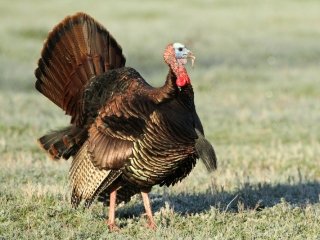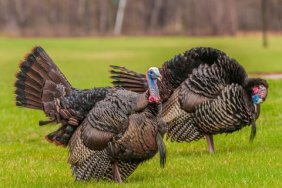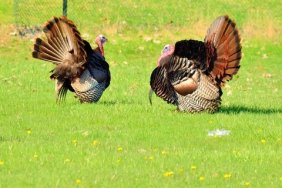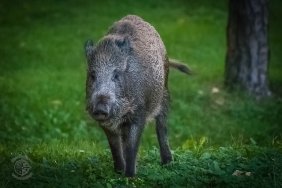 Every year during spring turkey hunting, there is a short window of opportunity when a hunter can literally sneak up on a mature gobbler. During this time, a unique set of circumstances has to occur, but when it happens, a hunter can do what is not supposed to be possible. Every hunter knows that a mature tom is the poster boy for keen senses. They have excellent hearing and their vision is so good that some say they can see you actually buying your hunting license. That is obviously an exaggeration, but they can see a slight movement over a half mile away, so how can you ever hope to creep within 30 yards of a healthy gobbler?
Every year during spring turkey hunting, there is a short window of opportunity when a hunter can literally sneak up on a mature gobbler. During this time, a unique set of circumstances has to occur, but when it happens, a hunter can do what is not supposed to be possible. Every hunter knows that a mature tom is the poster boy for keen senses. They have excellent hearing and their vision is so good that some say they can see you actually buying your hunting license. That is obviously an exaggeration, but they can see a slight movement over a half mile away, so how can you ever hope to creep within 30 yards of a healthy gobbler?
There are three phases of every turkey mating season for a mature gobbler. There is the beginning stage where the gobbler finds himself among the general flock containing mature hens that are eager to nest. This is a short period of time when anything goes and fertile females get serviced without any ritual. When most hens are ready to mate, this tom will set up one or more strutting zones, where the hens can come and be bred. The gobbler will pick out an advantageous location that can be as small as a pickup truck footprint, or as large as half acre. At the beginning of the strutting zone stage, there is a lot of activity in and around the strutting zone. The gobbler usually stays there most of the day while periodically gobbling to let area hens know where he is located. The hens will then travel to the tom, get serviced, and then feed their way to their nests.
The third stage of mating season is the clean up stage. This is when the gobbler quietly hangs out at his strutting zone and breeds stragglers. These late comers are mostly immature hens or hens that have had their nests preyed upon and need to re-lay a clutch of eggs. This third stage only lasts a few days and is a deadly time to sneak up on the mature gobbler.
During the clean up stage, a male is tired and worn out from expending all of his energy mating. He has only fed occasionally during the weeks long mating season, and he has quit advertising his location with constant gobbles because all the area turkeys know where he is at already, so he is very vulnerable. Another factor that makes him vulnerable is that due to his fatigue factor, his senses are not working properly and this is when you can kill him.
If you already know where the strutting zone is, you are a step ahead of the game. However, this is also the easiest time to find a gobbler in his strut zone. As already mentioned, he is not constantly giving away his position with gobbles, but if he happens to hear the yelp of a searching hen, he will answer no matter what. He is assuming that a new hen has entered the area and does not know where he is located, so he cannot resist an answer back. Not many things in the wild are guaranteed, but I promise you that this is. I have seen it and caused it hundreds of times during late turkey season. This is when you can now make your move and sneak.
Since the zone traffic is low, you won’t have to worry about multiple sets of eyes spotting you. Not only is it easier to get close, but when you do finally spot the gobbler in full strut, you can use his own fanned tail as cover as you sneak. He will be in strut all day and when he turns his back to you, his fan is a perfect shield to hide you on your journey. If you use it wisely, you will succeed. Not only can you kill the dominant turkey in the area, but when you do, he would have already spread his seed and helped populate next year’s crop of up-and-comers. Try this tactic when you think the hunting is slow at the end of turkey season and you will be impressed with yourself. While guiding clients for years, I have been successful with this tactic on Merriams, Rio Grande’s, and Easterns. Try it, you will like it.
.jpg?w=320)







